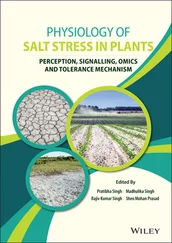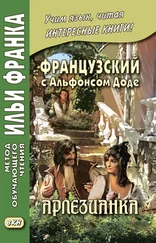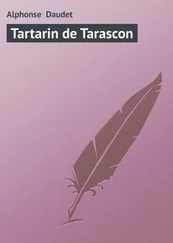Alphonse Candolle - Origin of Cultivated Plants
Здесь есть возможность читать онлайн «Alphonse Candolle - Origin of Cultivated Plants» — ознакомительный отрывок электронной книги совершенно бесплатно, а после прочтения отрывка купить полную версию. В некоторых случаях можно слушать аудио, скачать через торрент в формате fb2 и присутствует краткое содержание. Жанр: foreign_antique, foreign_prose, на английском языке. Описание произведения, (предисловие) а так же отзывы посетителей доступны на портале библиотеки ЛибКат.
- Название:Origin of Cultivated Plants
- Автор:
- Жанр:
- Год:неизвестен
- ISBN:нет данных
- Рейтинг книги:4 / 5. Голосов: 1
-
Избранное:Добавить в избранное
- Отзывы:
-
Ваша оценка:
- 80
- 1
- 2
- 3
- 4
- 5
Origin of Cultivated Plants: краткое содержание, описание и аннотация
Предлагаем к чтению аннотацию, описание, краткое содержание или предисловие (зависит от того, что написал сам автор книги «Origin of Cultivated Plants»). Если вы не нашли необходимую информацию о книге — напишите в комментариях, мы постараемся отыскать её.
Origin of Cultivated Plants — читать онлайн ознакомительный отрывок
Ниже представлен текст книги, разбитый по страницам. Система сохранения места последней прочитанной страницы, позволяет с удобством читать онлайн бесплатно книгу «Origin of Cultivated Plants», без необходимости каждый раз заново искать на чём Вы остановились. Поставьте закладку, и сможете в любой момент перейти на страницу, на которой закончили чтение.
Интервал:
Закладка:
Clusius, Hist. , ii. p. 77.
148
Ajes was a name for the yam (Humboldt, Nouvelle Espagne ).
149
Humboldt, ibid.
150
Oviedo, Ramusio’s translation, vol. iii. pt. 3.
151
Rumphius, Amboin. , v. p. 368.
152
Forskal, p. 54; Delile, Ill.
153
D’Hervey Saint-Denys, Rech. sur l’Agric. des Chin. , 1850, p. 109.
154
Study and Value of Chinese Botanical Works , p. 13.
155
Thunberg, Flora Japon. , p. 84.
156
Forster, Plantæ Escul. , p. 56.
157
Hooker, Handbook of New Zealand Flora , p. 194.
158
Seemann, Journal of Bot. , 1866, p. 328.
159
Roxburgh, edit. Wall., ii. p. 69.
160
Piddington, Index .
161
Wallich, Flora Ind.
162
Roxburgh, edit. 1832, vol. i. p. 483.
163
Rheede, Mal. , vii. p. 95.
164
Meyer, Primitiœ Fl. Esseq. , p. 103.
165
R. Brown, Bot. Congo , p. 55.
166
Schumacher and Thonning, Besk. Guin.
167
Wallich, in Roxburgh, Fl. Ind. , ii. p. 63.
168
Sloane, Jam. , i. p. 152.
169
Several Convolvulaceæ have large roots, or more properly root-stocks, but in this case it is the base of the stem with a part of the root which is swelled, and this root-stock is always purgative, as in the Jalap and Turbith, while in the sweet potato it is the lateral roots, a different organ, which swell.
170
No. 701 of Schomburgh, coll. 1, is wild in Guiana. According to Choisy, it is a variety of the Batatas edulis ; according to Bentham (Hook, Jour. Bot. , v. p. 352), of the Batatas paniculata . My specimen, which is rather imperfect, seems to me to be different from both.
171
Clusius, Hist. , ii. p. 77.
172
A. de Candolle, Géogr. Bot. Raisonné , pp. 1041-1043, and pp. 516-518.
173
Dr. Bretschneider, after having read the above, wrote to me from Pekin that the cultivated sweet potato is of origin foreign to China, according to Chinese authors. The handbook of agriculture of Nung-chang-tsuan-shu, whose author died in 1633, asserts this fact. He speaks of a sweet potato wild in China, called chu , the cultivated species being kan-chu . The Min-shu , published in the sixteenth century, says that the introduction took place between 1573 and 1620. The American origin thus receives a further proof.
174
Moquin-Tandon, in Prodromus , vol. xiii. pt. 2, p. 55; Boissier, Flora Orientalis , iv. p. 898; Ledebour, Fl. Rossica , iii. p. 692.
175
Roxburgh, Flora Indica , ii. p. 59; Piddington, Index .
176
Theophrastus and Dioscorides, quoted by Lenz, Botanik der Griechen und Römer , p. 446; Fraas, Synopsis Fl. Class. , p. 233.
177
Heldreich, Die Nutzpflanzen Griechenlands , p. 22.
178
Alawâm, Agriculture nabathéenne , from E. Meyer, Geschichte der Botanik , iii. p. 75.
179
Notice sur l’Amélioration des Plantes par le Semis , p. 15.
180
Pohl, Plantarum Brasiliæ Icones et Descriptiones , in fol., vol. i.
181
J. Müller, in Prodromus , xv., sect. 2, pp. 1062-1064.
182
Sagot, Bull. de la Soc. Bot. de France , Dec. 8, 1871.
183
I give the essentials of the preparation; the details vary according to the country. See on this head: Aublet, Guyane , ii. p. 67; Decourtilz, Flora des Antilles , iii. p. 113; Sagot, etc.
184
R. Brown, Botany of the Congo , p. 50.
185
Humboldt, Nouvelle Espagne , edit. 2, vol. ii. p. 398.
186
Hist. de l’Acad. des Sciences , 1824.
187
Guillemin, Archives de Botanique , i. p. 239.
188
Acosta, Hist. Nat. des Indes , French trans., 1598, p. 163.
189
Thomas, Statistique de Bourbon , ii. p. 18.
190
The catalogue of the botanical gardens of Buitenzorg, 1866, p. 222, says expressly that the Manihot utilissima comes from Bourbon and America.
191
Aypi , mandioca , manihot , manioch , yuca , etc., in Pohl, Icones and Desc. , i. pp. 30, 33. Martius, Beiträge z. Ethnographie, etc., Braziliens , ii. p. 122, gives a number of names.
192
Thonning (in Schumacher, Besk. Guin. ), who is accustomed to quote the common names, gives none for the manioc.
193
J. Müller, in Prodromus , xv., sect. 1, p. 1057.
194
Kunth, in Humboldt and B., Nova Genera , ii. p. 108.
195
Pohl, Icones et Descr. , i. p. 36, pl. 26.
196
Müller, in Prodromus .
197
De Martius, Beiträge zur Ethnographie , etc., i. pp. 19, 136.
198
Piso, Historia Naturalis Braziliæ , in folio, 1658, p. 55, cum icone .
199
Jatropia Sylvestris Vell. Fl. Flum. , 16, t. 83. See Müller, in D. C. Prodromus , xv. p. 1063.
200
Kunth, Enum. , iv. p. 381.
201
Schweinfurth and Ascherson, Aufzählung , p. 294.
202
Ledebour, Flora Altaica , ii. p. 4; Flora Rossica , iv. p. 162.
203
Regel, Allior. Monogr. , p. 44.
204
Baker, in Journal of Bot. , 1874, p. 295.
205
Bretschneider, Study and Value , etc., pp. 15, 4, and 7.
206
Thunberg, Fl. Jap. ; Franchet and Savatier, Enumeratio , 1876, vol. ii.
207
Unger, Pflanzen des Alten Ægyptens , p. 42.
208
Piddington, Index .
209
Hiller, Hierophyton ; Rosenmüller, Bibl. Alterthum , vol. iv.
210
De Charencey, Actes de la Soc. Phil. , 1st March, 1869.
211
Davies, Welsh Botanology .
212
All these common names are found in my dictionary compiled by Moritzi from floras. I could have quoted a larger number, and mentioned the probable etymologies, as given by philologists – Hehn, for instance, in his Kulturpflanzen aus Asien , p. 171 and following; but this is not necessary to show its origin and early cultivation in several different countries.
Читать дальшеИнтервал:
Закладка:
Похожие книги на «Origin of Cultivated Plants»
Представляем Вашему вниманию похожие книги на «Origin of Cultivated Plants» списком для выбора. Мы отобрали схожую по названию и смыслу литературу в надежде предоставить читателям больше вариантов отыскать новые, интересные, ещё непрочитанные произведения.
Обсуждение, отзывы о книге «Origin of Cultivated Plants» и просто собственные мнения читателей. Оставьте ваши комментарии, напишите, что Вы думаете о произведении, его смысле или главных героях. Укажите что конкретно понравилось, а что нет, и почему Вы так считаете.











